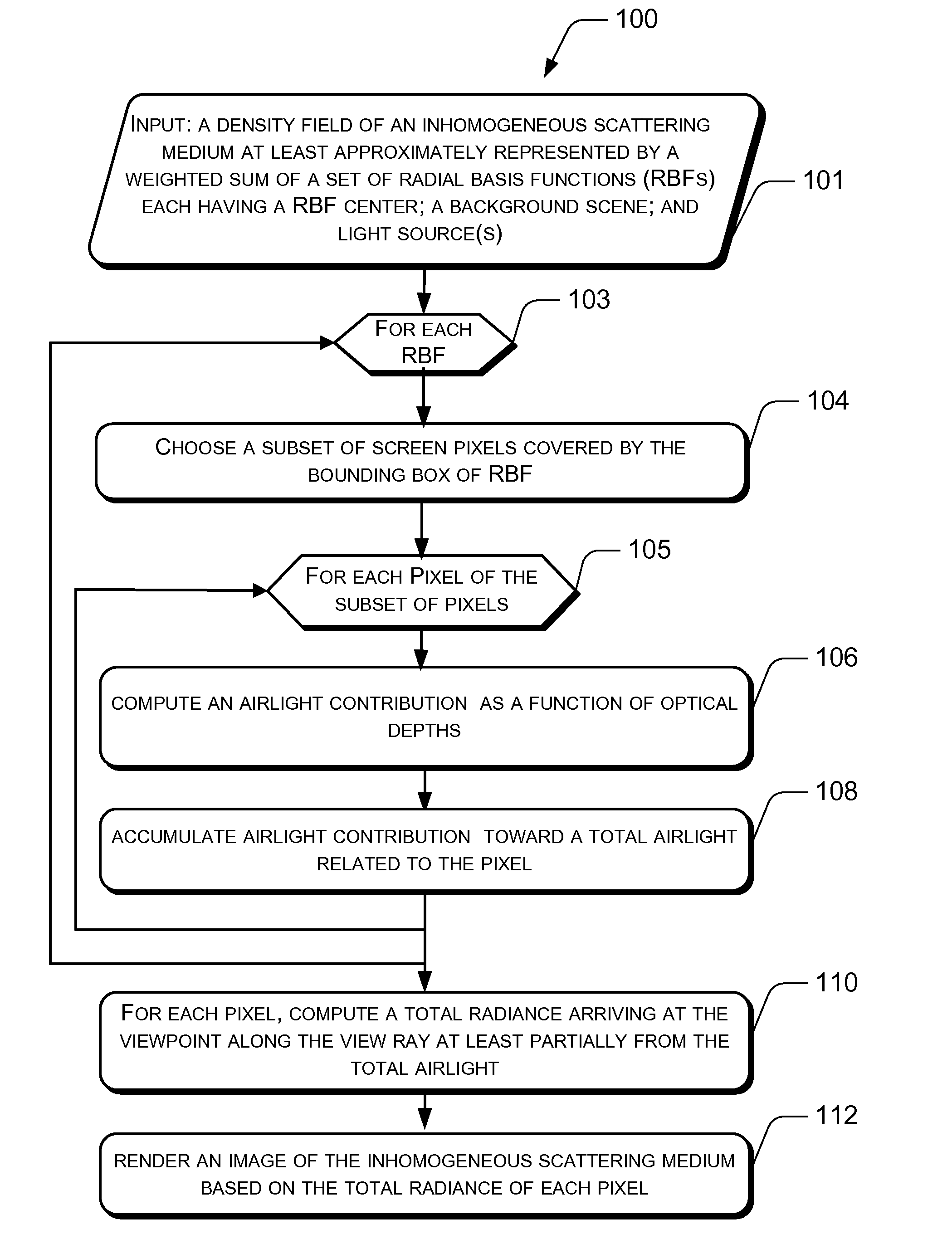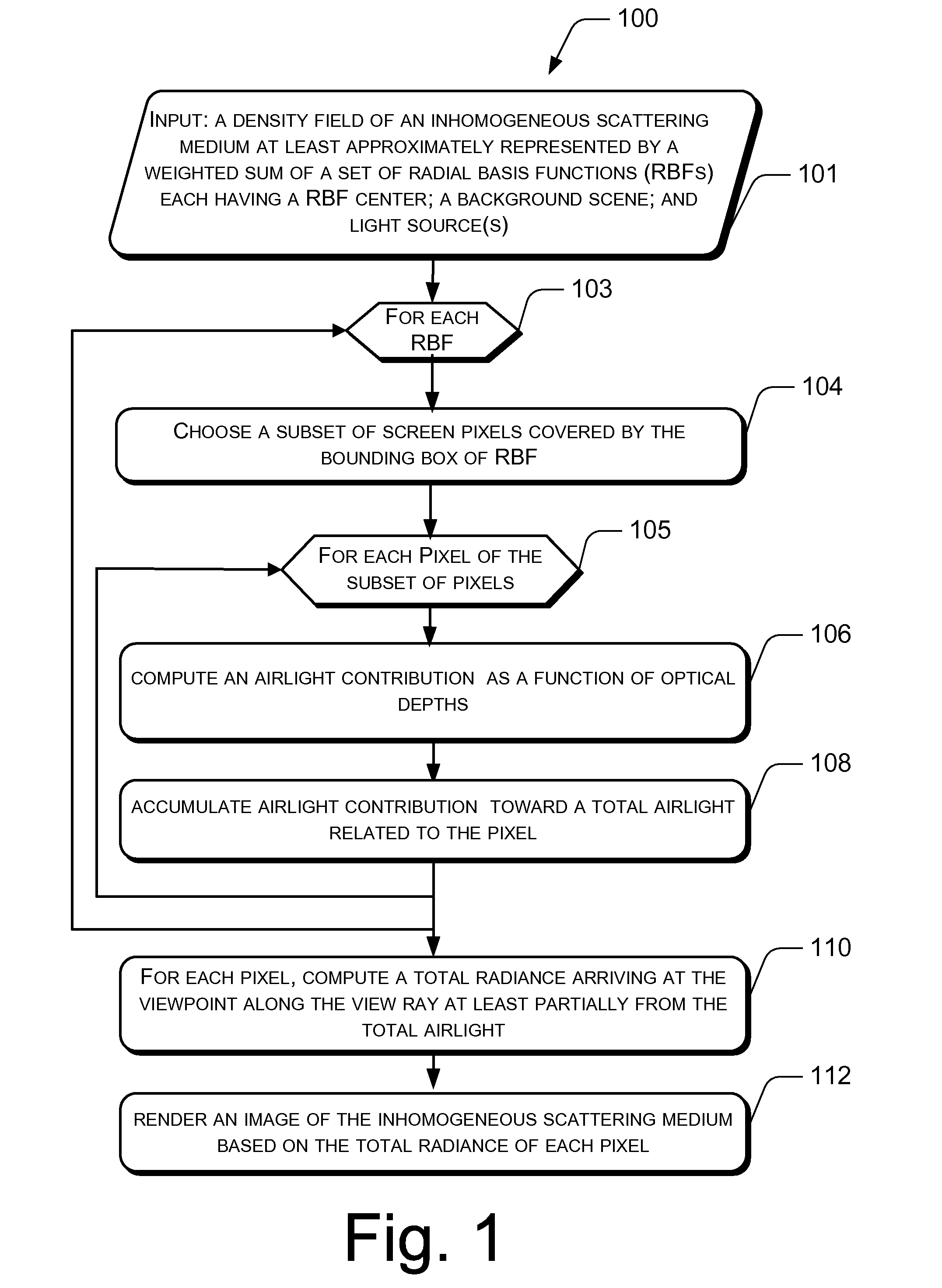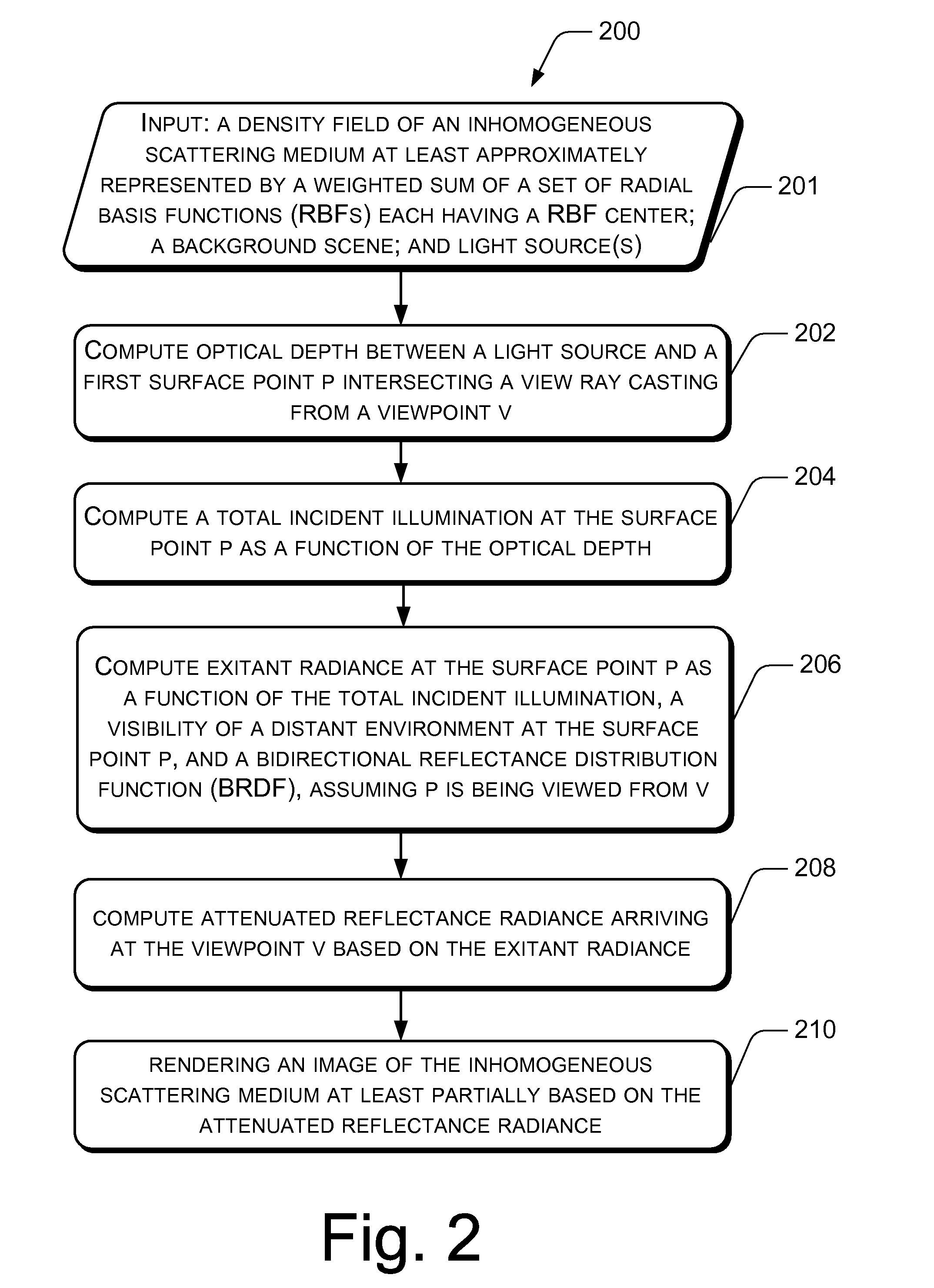Real-Time Rendering of Light-Scattering Media
a technology of light scattering and real-time rendering, applied in analogue computers, analogue and hybrid computing, instruments, etc., can solve the problems of producing an overall implausible and cartoon-like effect, and being too expensive for the real-time demands of designers and end-users, and achieve the effect of simple optical depth averaging
- Summary
- Abstract
- Description
- Claims
- Application Information
AI Technical Summary
Benefits of technology
Problems solved by technology
Method used
Image
Examples
Embodiment Construction
Overview
[0019]The algorithms described herein may be generalized to be applicable to a variety of light sources, including point light and environment light, and is capable of simulating scattering effects such as shadowing and haloing which other methods either ignore or takes a significant amount of commutation to render. Novel approximations are part of the algorithms described herein that make real-time rendering possible. In some embodiments, the algorithms relate to a screen-space rendering method, in contrast to volume rendering methods. In these embodiments, single scattering is considered without considering the source radiance within the volume.
[0020]The algorithms described herein include two major aspects. The first aspect counts for airlight of an inhomogeneous scattering medium. The second aspect counts for surface reflectance of an object (surface) placed in the inhomogeneous medium. The airlight relates to the appearance of the scattering medium illuminated by one or...
PUM
 Login to View More
Login to View More Abstract
Description
Claims
Application Information
 Login to View More
Login to View More - R&D
- Intellectual Property
- Life Sciences
- Materials
- Tech Scout
- Unparalleled Data Quality
- Higher Quality Content
- 60% Fewer Hallucinations
Browse by: Latest US Patents, China's latest patents, Technical Efficacy Thesaurus, Application Domain, Technology Topic, Popular Technical Reports.
© 2025 PatSnap. All rights reserved.Legal|Privacy policy|Modern Slavery Act Transparency Statement|Sitemap|About US| Contact US: help@patsnap.com



